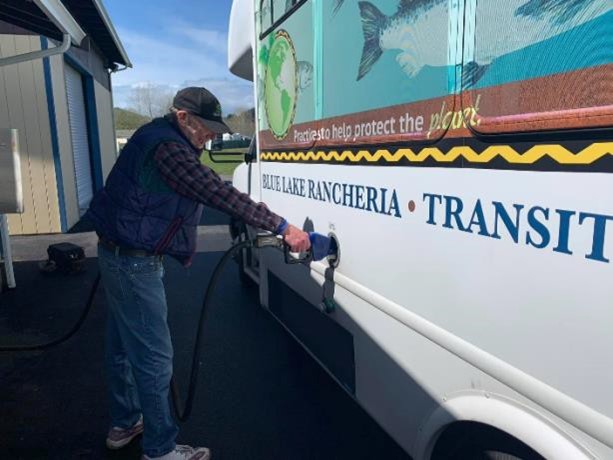Executive Summary
This document was prepared for CTAA by Civic Sphere as part of the N-CATT cooperative agreement between CTAA and FTA.
Chapter 1 of the Guidebook opens with an explanation of its purpose, which is to help management staff in the United States (US) transit industry with a particular aspect of the transit technology adoption process—how to best engage frontline employees as they transition into a new era of transit technologies. This chapter also explains that the Amalgamated Transit Union (ATU) was a partner in developing the content and direction of the Guidebook, taking part in interviews and connecting its author with transit agencies that have unique and broadly applicable experience in the field. Due to the ATU’s involvement, it became clear to the National Center for Applied Transit Technology (N-CATT) that zero-emission bus (ZEB) technologies, which include both battery electric buses (BEB) and fuel cell electric buses (FCEB) powered by hydrogen, could serve as the relevant technologies of focus for the Guidebook. Not only is ZEB technology incredibly complex in terms of the infrastructure and planning required, but it is also becoming increasingly prevalent at transit agencies across the US. Due to its level of complexity, transit agencies that are early adopters of the technology have struggled to handle all of the operational aspects required; consequently, agencies often find it challenging to address the full scope of workforce development activities needed for ZEB technologies.
In Chapter 2, the question of how to best engage frontline employees in adopting new transit technologies is put into a broader framework for context. The transit industry has for many years, even prior to the COVID-19 pandemic, struggled to attract and retain enough workers to operate transit services. Documented reasons for this state of affairs, including the current and continuing wave of staff retirements, are provided and coupled with something to keep front-of-mind—when addressing the challenges of the transit industry, consider that it has a variety of strengths to consider and optimize. It offers its professionals job stability, career potential, job options, and impactful work. The Guidebook leans on these strengths from beginning to end to stress how important it is for the transit industry to maximize what it already has in place—meaningful and stable work of which employees can be proud. The chapter closes with an overview of the top three ways to engage employees; these are leveraged throughout the Guidebook to help focus related efforts.
Since having employees who understand and are prepared to work confidently with new technologies is a prerequisite for engagement with the technology adoption process, Chapter 3 is focused on the topic of training frontline employees on new transit technologies. This chapter leverages a detailed interview conducted with a representative of IndyGo, a transit agency in Indianapolis, Indiana and one of the largest transit agencies in the Midwest incorporating BEBs into its fleet, to serve as a contextual example of specific training activities that are fundamental for preparing the transit workforce to deploy new transit technologies. These activities include training through the original equipment manufacturer (OEM), periodic training for existing staff, on-the-job training, and mentorship programs; they are often used in combination for multi-prong training efforts. Toward the end of the chapter, special attention is given to apprenticeships, a particular method within the larger topic of training, which are critical for the inclusion of new recruits with high-tech skills.
Due to the transit industry’s current and continuing wave of staff retirements, in part, the industry and its agencies cannot afford to avoid the need to successfully attract and retain workers who are just beginning their careers. They are the ones who should be invested in now so the transit industry has a high-tech talent pipeline for years to come. If the transit industry does not succeed in beating the competition for high-tech workers—they are in high demand from a range of employers—it could have dire consequences for the long-term operational outlook of the transit industry. There are no shortcuts to address this problem; high-tech apprenticeships should be a major investment for the industry moving forward. Not only would it increase the likelihood of having a stable transit workforce, it would serve as a base for employee engagement—employees who are invested in are more likely be committed to their work.
Chapter 4 provides background on how apprenticeships work, relying on the example set by Santa Clara Valley Transit Authority (VTA), a transit agency in Santa Clara County, California, that implemented the Transportation Apprenticeships for Professional Career Advancement (TAPCA) Program in 2016 in close partnership with Mission College and ATU Local 265. Through interviews with an ATU representative early in the research process for the Guidebook, VTA’s TAPCA program was identified as an exemplary effort. This chapter covers why VTA initially developed the TAPCA program, how the program facilitates career pathways, how its partnerships work, and which funding options were leveraged. It goes into detail on how these apprenticeships are structured, the specific benefits of apprenticeships, and the current known status of ZEB apprenticeships across the US. The information on VTA’s TAPCA program provides the reader with a template that can be used as an illustrative educational example—or even held up as a model to follow.
Chapter 5, “Next Steps for Engaging Frontline Employees in Adopting New Transit Technologies,” is an instructional chapter that builds on the content from the previous four chapters and provides five “next steps” categories. The first three proposed next step categories relate to the top three ways to engage employees shared in Chapter 2—establishing a shared vision and purpose, investing in individual employees, and tailoring engagement strategies to both current employees and potential new recruits. The last two proposed next step categories pertain to Chapters 3 and 4—train frontline employees on new transit technologies and establish apprenticeships for new transit technologies. The next steps contained in Chapter 5, as a set, can be used by transit professionals to help guide their process of applying the information from Chapters 1-4 to their own situation.
